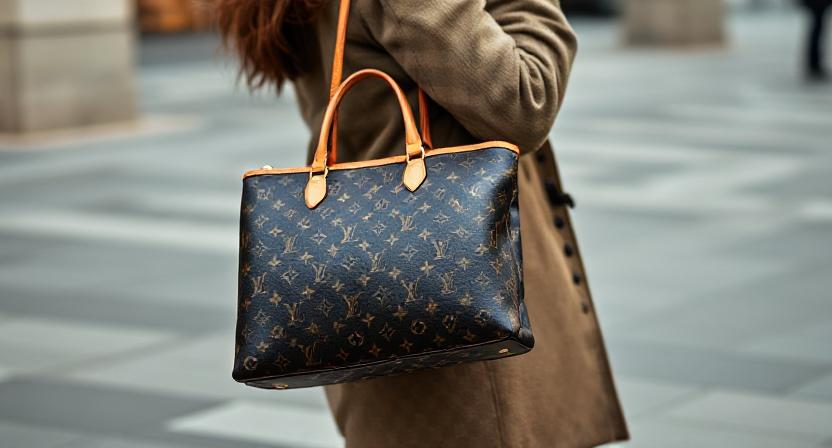LV Real vs Fake: How to Spot a Genuine Louis Vuitton Bag
Louis Vuitton is more than just a luxury brand—it’s a symbol of timeless elegance and craftsmanship. However, with its global popularity comes a dark side: counterfeiters. Did you know that over 10% of luxury goods sold worldwide are fake? Whether you’re a first-time buyer or a seasoned collector, knowing how to tell if a Louis Vuitton is real can save you from costly mistakes. In this guide, we’ll explore the key differences between lv real vs fake bags and provide actionable tips to ensure you’re investing in authenticity. For more insights into luxury brands and authentication, check out TrueFacet’s luxury handbags.
Why Authenticity Matters
When you purchase a Louis Vuitton bag, you’re not just buying a product—you’re investing in decades of heritage, unparalleled craftsmanship, and high-quality materials. Authentic LV bags are made to last, often becoming heirlooms passed down through generations.
Here are some fascinating Louis Vuitton facts to keep in mind:
- The iconic LV monogram was created in 1896 by Georges Vuitton to honor his father, Louis.
- Every LV bag is handmade by skilled artisans, taking up to 30 hours to complete.
- The brand produces over 5 million products annually, making it one of the most counterfeited luxury brands.
Understanding these details helps you appreciate why authenticity matters—and why spotting a fake is crucial.
Key Differences Between Real and Fake Louis Vuitton Bags
Logo and Monogram Patterns
The LV monogram is one of the most recognizable symbols in fashion—but it’s also one of the most replicated. Here’s how to spot the difference:
- Real LV : The monogram pattern is perfectly symmetrical and aligned. For example, the “LV” logo should never be cut off at the edges of the bag, and the flowers and quatrefoils are evenly spaced.
- Fake LV : Counterfeit bags often have misaligned logos, reversed patterns, or uneven spacing. If the monogram looks “off,” it’s likely a fake.
Pro Tip : Look closely at the stitching around the monogram. Authentic bags have clean, precise stitching, while fakes often show sloppy workmanship.

Women Carrying LV Bag
Stitching and Craftsmanship
Authentic Louis Vuitton handbags are known for their impeccable stitching:
- Real LV : The stitching is straight, even, and consistent throughout the bag. Threads are durable and color-matched to the design.
- Fake LV : Poor-quality stitching is a dead giveaway. Look for loose threads, uneven spacing, or mismatched thread colors.
Material Quality
The materials used in Louis Vuitton bags are second to none:
- Real LV : Genuine bags are made from coated canvas, which is both water-resistant and scratch-resistant. Leather trims are supple and luxurious, while hardware is solid brass or gold-plated.
- Fake LV : Counterfeit bags often use thin, flimsy canvas that feels plasticky. Leather trims may crack easily, and hardware is lightweight or tarnished.
Serial Numbers and Date Codes
Every authentic Louis Vuitton bag has a unique serial number or date code:
- Real LV : The code is stamped on a leather tag inside the bag or embossed on the lining. It includes a two-letter factory code followed by four numbers indicating the production date.
- Fake LV : Fake bags may have incorrect codes, wrong fonts, or missing tags altogether.
Fun Fact : Louis Vuitton stopped including “Made in France” labels in the 1980s, so seeing this phrase might indicate a vintage piece—or a fake.
Hardware and Zippers
The hardware on an authentic LV bag is a work of art:
- Real LV : Zippers are smooth, heavy, and engraved with the Louis Vuitton logo. Metal parts have a polished finish and feel substantial.
- Fake LV : Cheap zippers, lack of engraving, or lightweight hardware are red flags.
Interior Labeling and Tags
Even the smallest details matter:
- Real LV : Interior tags are perfectly aligned, with crisp fonts and correct spelling. Labels include care instructions and material information.
- Fake LV : Misspelled words, blurry fonts, or misplaced tags are common signs of a counterfeit.
Where to Buy Authentic Louis Vuitton Bags
To avoid falling victim to counterfeiters, always purchase from trusted sources:
- Authorized Retailers : Visit official Louis Vuitton stores or their website for guaranteed authenticity.
- Second-Hand Platforms: Use reputable platforms like TrueFacet , Vestiaire Collective, or StockX, which authenticate items before listing them.
- Red Flags : Be wary of sellers offering steep discounts, private listings without proof of authenticity, or unverified online stores.
Tools and Resources for Authenticating LV Bags
If you’re unsure about a bag’s authenticity, consider these tools:
- Professional Services : Companies like Authenticate First and Entrupy offer expert authentication services.
- Online Communities : Join forums like Reddit’s r/LouisVuitton or Facebook groups where enthusiasts share tips and advice.
- Mobile Apps : Apps like Legit.Life help verify luxury goods using AI technology.
Common Myths About Louis Vuitton Bags
Let’s debunk some misconceptions:
- Myth 1 : “All LV bags come with a dust bag.”
- Fact: While many authentic bags include dust bags, older models or certain styles may not.
- Myth 2 : “If it has a serial number, it’s real.”
- Fact: Counterfeiters often replicate serial numbers, so they’re not a sole indicator of authenticity.
- Myth 3 : “Only new bags are authentic.”
- Fact: Pre-owned LV bags can be genuine if purchased from trusted sources. Learn more about pre-owned luxury items at LuxyVerse’s pre-owned luxury guide.
Conclusion
Spotting a real vs fake Louis Vuitton bag requires attention to detail and knowledge of the brand’s hallmarks. By examining the logo, stitching, materials, and other key features, you can confidently identify an authentic piece. Remember, when in doubt, consult a professional or stick to authorized retailers.
Have you ever encountered a counterfeit Louis Vuitton bag? Share your story in the comments below, or let us know if you have any questions about authentication!







